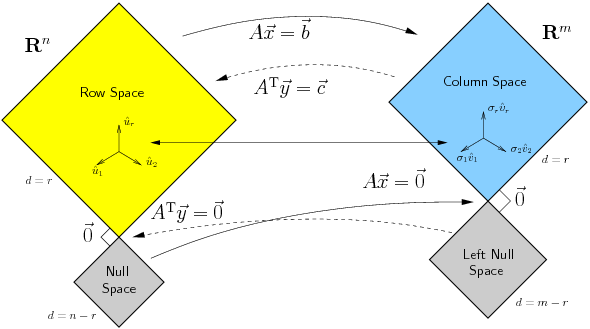Homework:
Homework questions are assigned from the text and you will benefit greatly from working your way through them.(Of course, you are welcome to work on more than these subsets if you like.)
The solutions to selected questions are at the end of the textbook.
Section 1.1: (pp. 6-10) A, B, 1, 2, 4, 6, 9, 10, 13, and, for a challenge, 28.
Section 1.2: (pp. 17-20) A, B, 1, 2, 3, 5, 7, 8, 13, and 29.
Section 2.1: (pp. 29-34) A, B, 1-4, 6-8, 10a, 11a, 14a, 14b, 15, 16, 17, 27, 28, 29, and, if you like computers, 30, 31, 32.
Section 2.2: (pp. 40-45) A, B, 1-9, 11, 12, 13, 15a, (trickier) 16, 18, 19 25
Section 2.3: (pp. 51-56) A, B, C, 1, 2, 3, 4, 5, 6, 9a), 10, 16, 19, 20, 23, 24, 25, 28.
Section 2.4: (pp. 62-70) B, (A, C very good but view as extra material) 1, 2, 3, 5, 6, 7, 8, 9 11, 14, 17a, 17b, 18a, 21, 24a, 26, 27 (important), 28.
Section 2.5: (pp. 77-83 ) A, B (optional---more for those with a math focus), 1, 2, 4, 5, 6, 7, 8, 11, 12, 15, 18, 22, 28, 29, 30.
Section 2.6: (pp. 91-96) 1, 2, 5, 6, 12, 15, 22, (25, 26, both harder). If you get along well with computers: 32, 33, 35; A and B are a good challenge.
Section 2.7:
All about transposes and symmetric matrices:
(pp. 103-109) 1-7, 16-21, plus please examine the `transparent proof' on page 109 of why (AB)T = BTAT.
Section 3.1: (pp. 116-121) A, B, 9-18 (very good), 19-29 (also very good), 1-8 (extra stuff on vector spaces).
Section 3.2: (pp. 129-133) A, B, (1-4), (5-8), 9, 10, 11, 18, 20, (21-24, a festival), 26, 27, 30, 31, 32, 33a.
Section 3.3: (pp. 139-144) A, B, 1, 2, 3, 4, 6, 12, 13, 15.
Section 3.4: (pp. 149-156) A, B, C, (1-8, full solution stuff, all good), 11, 13, 16, 17, 18, 22, (23-25), 26, 28, 29, 30, 33.
Section 3.5:
A, 1, 2, 3, 5, 11, 12, 16, 25, 26, 27, 28; also: B and C (tougher).
Section 3.6:
B, 1, 2, 4, 5, 6, 7, 8, 16, 17, 24.
Section 4.1:
A, B, 3, 4, 5, 11, 12, 13, 16, 17, 19, 21, 28, 29.
Section 4.2:
A, 1, 3, (5, 6, 7—a good set), 11, 13, 17 (important!), 19, (21, 22, 23 ,24—good thinking here), 27, 30 (curious and conceptual).
Section 4.3—Approximate Solutions:
A, B, (1, 2, 3, 5, 7, 9—all good), 12 (important), 17, 18.
Section 4.4—Orthogonality and the Gram-Schmidt Process:
(pp. 227-232) A (good example of why orthogonality matters), 1, 2, 3, 4, 6, 7 (good), 10b, 11 (good), 13, 15, 16, 18, 20, (33, 34: reflection matrices, slightly harder).
Section 6.1—Eigenstuff:
(pp. 282-288) A (read straight away), B (examine later), 2, 7, 8, 11 (tricksy), 13, 16, 17, 18 (good), 19, 20, 22, 28, 30.
Section 5.1—Determinants:
(pp. 239-244) A, B, 2, 3, 4, 7, 8a, 8b (harder and good), 9, (10, 11, 12, all good thinking questions), 13, 14, 15, (optional: any of 17-23), 24, 28 (true/false), 29 (good).
Section 5.2—Cofactors:
(pp. 252-259) A, 11, 12, 15a, 15b (good), 17, 18 (Fibonacci!), 21, 22, 36 (a challenge).
Section 5.3—Cramer's Rule and inversiveness:
(pp. 268-273) A, B (for increased understanding, not so practical numerically), 1, 2a, 3, 5 (good for thinking), 6a and/or 6b, 7 (thinking), 8, 9, 10 (quick proof question), 11 (professorial challenge).
Section 6.2—Diagonalization (joy):
(pp. 296-303) A, B, 1 (ground level), 2, 3, 4, 5 (must be in brain), 7, 8 (good), 9 (Fibonaccilicious), 10 (Gibonacci!), 14, 17 (interesting), 19, 20 (please do!), 22 (delicious), 24, 25 (fun with the trace), 29 (good thinking), 36 (Cayley Hamilton), 38 (see 29).
Section 7.3—Changing bases:
(pp. 388-390) 1, 6.
Section 6.4—Diagonalization and Symmetric Matrices (symphonic):
(pp. 325-330) 1, (a few of 3, 4, 5, and 6), 7, 8 (good), 10, 11 (important), 18 (expanding), 19, 20 (eigenvalues versus pivots), 21 (good), 23 (hmmm), 25 (good), 26 (challenge).
Section 6.5—Positive Definite (very assured) Matrices:
(pp. 338-342) 1 (do this), 2, 3 (important), 5, 6 (solidity), 7 (one or more), 9, 10, 12, 19, 22 (enjoyably good), 25 (Cholesky factorization), 30.
Section 6.7—The Truth of Singular Value Decomposition (SVD):
(pp. 359-361) A (a big deal), (1, 2, 3) (please do), (4, 5, 6, 7) (worthwhile), 8 (good, general), 9 (specific), 10 (tougher), 11 (key), 15, 16 (thinking).
Bonus:
- Review p. 362 formulae.
- Read over p. 568's `linear algebra in a nutshell.'
- Delight in the Conceptual Questions for Review on pp. 546-550.
- Examine the major matrix formulations on pp. 544 and 545. The course will definitely cover 1-8, and 10.
